Mobile Application Development: A Guide to Creating Engaging Apps
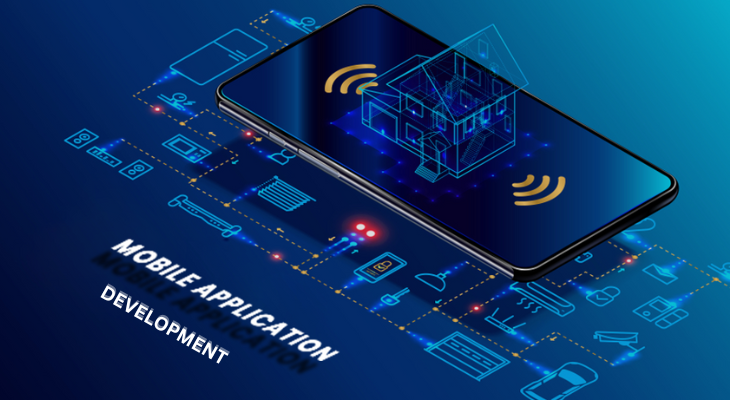
In today’s tech-driven world, mobile applications have become an indispensable part of our lives, seamlessly integrating into our daily routines. From staying connected with loved ones to managing our finances, these versatile tools have revolutionized the way we interact with the world around us. If you’re considering venturing into the realm of mobile app development, this comprehensive guide will provide you with the insights and guidance you need to create successful and engaging apps.
Table of Contents
ToggleWhat is Mobile Application Development?
Mobile application development (MAD) is the process of creating software applications specifically designed for mobile devices such as smartphones and tablets. These applications, often referred to as “apps,” are tailored to the unique features and capabilities of mobile devices, providing users with a convenient and engaging way to access information, communicate, and perform various tasks.
Definition and Scope of Mobile Application Development

The scope of mobile application development encompasses a wide range of activities, from ideation and design to programming, testing, and deployment. It involves understanding user needs, translating them into functional requirements, and utilizing programming languages and frameworks to create the application’s code. Mobile application developers must also consider factors such as device compatibility, performance optimization, and security measures.
Key Characteristics of Mobile Applications
Mobile applications are characterized by several distinct features that set them apart from traditional desktop applications:
- Portability: Mobile applications can be easily carried and used on the go, providing users with anytime, anywhere access.
- Touchscreen Interaction: Mobile applications are designed for touchscreen interaction, utilizing gestures and taps to navigate and interact with the app’s interface.
- Location Awareness: Many mobile applications leverage the device’s location capabilities to provide location-based services and personalized experiences.
- Sensor Integration: Mobile applications can utilize sensors such as accelerometers, gyroscopes, and cameras to enhance user experience and provide interactive features.
- Integration with Mobile Operating Systems: Mobile applications are developed for specific mobile operating systems, such as iOS for Apple devices and Android for Google devices, ensuring compatibility and optimal performance.
Benefits of Mobile Applications for Businesses and Individuals
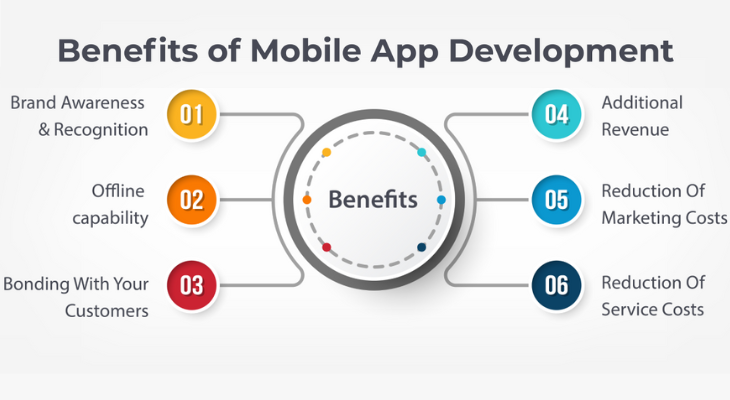
Mobile applications offer a multitude of benefits for both businesses and individuals:
For Businesses:
- Enhanced Customer Engagement: Mobile apps provide a direct channel for businesses to interact with customers, offering personalized experiences, loyalty programs, and real-time communication.
- Expanded Market Reach: Mobile apps can reach a global audience, enabling businesses to expand their market presence and attract customers from diverse geographic locations.
- Increased Brand Awareness: Engaging and informative mobile apps can enhance brand recognition and foster positive customer relationships.
- Data Collection and Analytics: Mobile apps provide valuable data about user behavior and preferences, enabling businesses to make data-driven decisions and improve their products and services.
For Individuals:
- Convenience and Accessibility: Mobile apps provide access to a wide range of services and information at the user’s fingertips, offering convenience and accessibility.
- Enhanced Productivity: Mobile apps can streamline tasks, organize schedules, and provide reminders, boosting productivity and efficiency.
- Personalized Experiences: Mobile apps can be tailored to individual needs and preferences, providing a personalized and engaging user experience.
- Entertainment and Leisure: Mobile apps offer a vast array of entertainment options, including games, social media platforms, and streaming services.
Mobile application development has revolutionized the way we interact with technology, providing businesses with new opportunities to connect with customers and individuals with enhanced access to information and services. As technology continues to evolve, mobile applications are poised to play an even more significant role in our daily lives.
Why is Mobile Application Development Important?
Mobile application development has become increasingly important for businesses and individuals alike. Here are some of the key reasons why mobile app development is crucial in today’s digital landscape:
- Ubiquity of Mobile Devices: Smartphones and tablets have become ubiquitous, with over 6.3 billion smartphone users worldwide. This vast and ever-growing user base provides a tremendous opportunity for businesses to reach a wide audience through mobile applications.
- Seamless User Experience: Mobile applications offer a convenient and engaging user experience, allowing users to access information, communicate, and perform tasks on the go. This convenience and accessibility have made mobile apps indispensable for many individuals.
- Expanded Market Reach: Mobile apps enable businesses to expand their market reach beyond geographical boundaries, connecting with potential customers worldwide. This global reach can significantly increase sales opportunities and brand recognition.
- Enhanced Customer Engagement: Mobile apps provide a direct channel for businesses to interact with their customers, offering personalized experiences, real-time communication, and loyalty programs. This fosters stronger customer relationships and drives customer engagement.
- Data Collection and Analytics: Mobile apps generate valuable data about user behavior, preferences, and usage patterns. This data can be analyzed to gain insights into customer needs, improve product offerings, and optimize marketing campaigns.
- Increased Revenue Streams: Mobile apps can generate revenue through various monetization strategies, such as in-app purchases, subscriptions, and advertising. This provides businesses with additional income streams and opportunities for growth.
- Improved Operational Efficiency: Mobile apps can streamline internal processes, automate tasks, and provide employees with real-time access to information, enhancing productivity and reducing costs.
- Competitive Advantage: In today’s competitive business landscape, mobile apps can provide businesses with a competitive edge by offering innovative features, personalized experiences, and direct communication with customers.
- Brand Awareness and Recognition: Engaging and informative mobile apps can enhance brand recognition and foster positive customer relationships, contributing to overall brand equity and reputation.
- Adaptability and Innovation: The mobile app development landscape is constantly evolving, with new technologies and trends emerging regularly. This adaptability allows businesses to stay ahead of the curve and innovate continuously.
Types of Mobile Applications
Native Applications
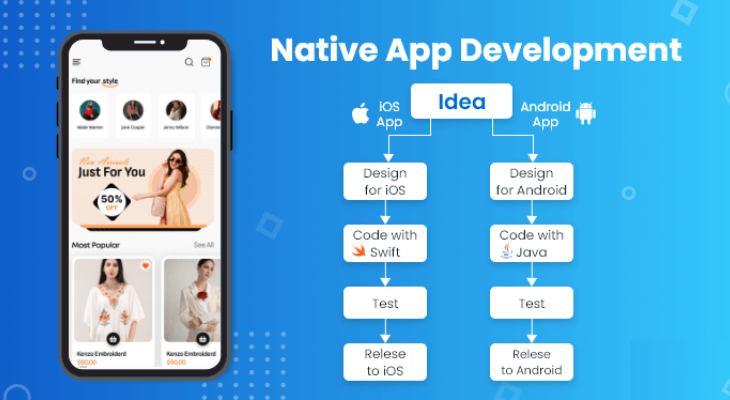
Native applications are designed and developed specifically for a particular mobile operating system, such as iOS for Apple devices or Android for Google devices. They are built using the native programming languages and development tools for that platform, allowing them to take full advantage of the device’s hardware and software capabilities.
Advantages of Native Applications:
- High performance and responsiveness
- Optimal user experience tailored to the specific platform
- Access to native device features and APIs
- Stronger security and integration with the device
Examples of Native Applications:
- Snapchat
- Spotify
- Google Maps
Hybrid Applications
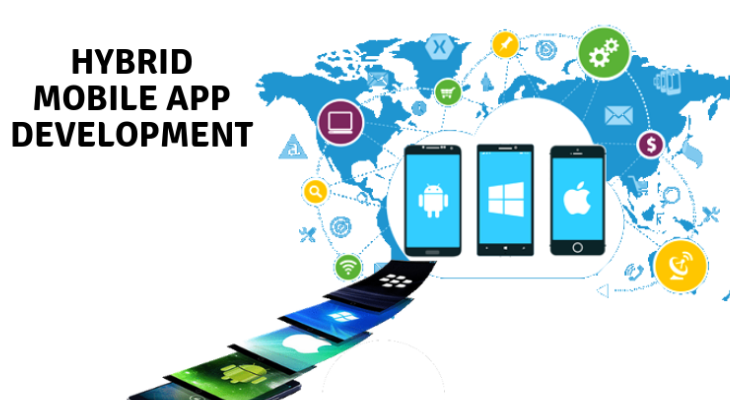
Hybrid applications combine web technologies like HTML, CSS, and JavaScript with a native app shell. This allows them to run on multiple platforms with a single codebase, reducing development time and costs.
Advantages of Hybrid Applications:
- Cross-platform compatibility
- Reduced development time and costs
- Easier maintenance and updates
- Accessibility to web-based features
Examples of Hybrid Applications:
- Uber
- Airbnb
- Salesforce
- Slack
- Evernote
Web Applications
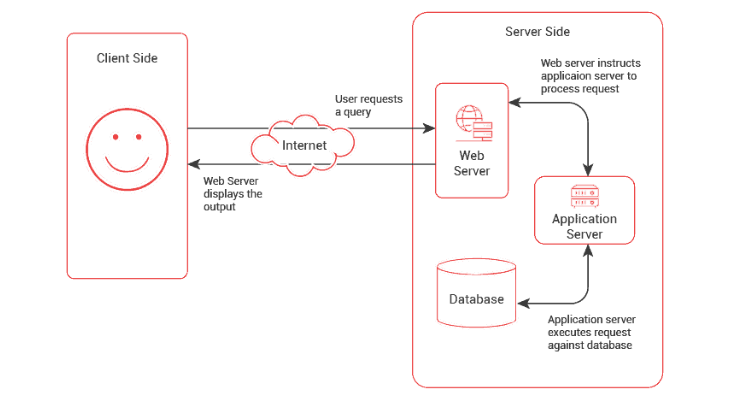
Web applications are essentially websites designed for mobile devices. They are accessed through a web browser instead of being installed on the device. This makes them platform-independent and accessible from any device with an internet connection.
Advantages of Web Applications:
- No installation required
- Cross-platform compatibility
- Easier updates and maintenance
- Lower development costs
Examples of Web Applications:
- Google Docs
- Facebook Lite
- Twitter Lite
Progressive Web Apps (PWAs)
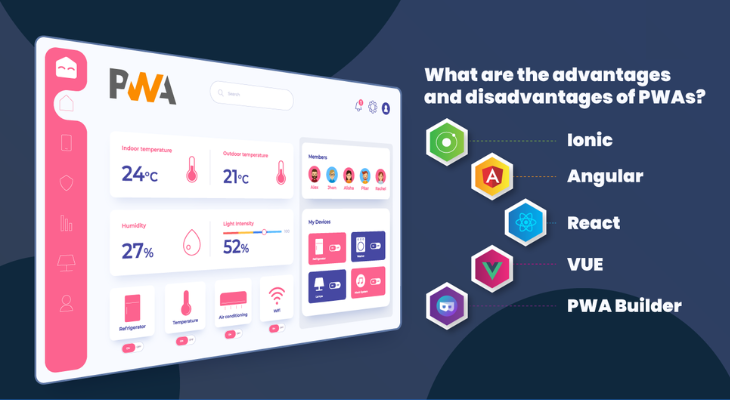
Progressive web apps (PWAs) combine the strengths of native apps and web applications. They provide a native-like user experience, work offline, and can access device features like push notifications.
Advantages of Progressive Web Apps:
- Native-like user experience
- Offline access
- Push notifications
- Searchability in app stores
- No installation required
Examples of Progressive Web Apps:
- Starbucks
- Forbes
- Flipkart
- AliExpress
In addition to these primary categories, there are also specialized types of mobile applications, such as:
- Games: Designed for entertainment and interactive gameplay
- Productivity tools: Assist in organizing tasks, managing schedules, and enhancing productivity
- Social media platforms: Facilitate communication and connection among users
- E-commerce apps: Enable online shopping and purchase of goods and services
- Educational apps: Provide interactive learning experiences and access to educational resources
Advantages of Mobile Application Development
- Enhanced Customer Engagement: Mobile apps provide a direct channel for businesses to interact with customers, offering personalized experiences, loyalty programs, and real-time communication. This fosters stronger customer relationships, drives customer engagement, and promotes brand loyalty.
- Expanded Market Reach: Mobile apps enable businesses to expand their market reach beyond geographical boundaries, connecting with potential customers worldwide. This global reach can significantly increase sales opportunities, brand recognition, and revenue streams.
- Increased Brand Awareness and Recognition: Engaging and informative mobile apps can enhance brand recognition, promote positive customer experiences, and foster brand loyalty. This contributes to overall brand equity, reputation, and customer perception.
- Data Collection and Analytics: Mobile apps generate valuable data about user behavior, preferences, and usage patterns. This data can be analyzed to gain insights into customer needs, improve product offerings, optimize marketing campaigns, and personalize user experiences.
- Improved Operational Efficiency: Mobile apps can streamline internal processes, automate tasks, provide employees with real-time access to information, and enhance collaboration.
- Competitive Advantage: In today’s competitive business landscape, mobile apps can provide businesses with a competitive edge by offering innovative features, personalized experiences, direct communication with customers, and enhanced brand engagement.
- Diversified Revenue Streams: Mobile apps can generate revenue through various monetization strategies, such as in-app purchases, subscriptions, advertising, and premium features. This provides businesses with additional income streams and opportunities for growth.
- Accessibility and Convenience: Mobile apps offer users anytime, anywhere access to information, services, and entertainment. This convenience and accessibility have made mobile apps indispensable for many individuals, enhancing their daily lives and providing a seamless user experience.
- Personalization and Customization: Mobile apps can be tailored to individual needs and preferences, providing personalized experiences, recommendations, and content. This enhances user satisfaction and fosters a sense of engagement.
- Innovation and Adaptability: The mobile app development landscape is constantly evolving, with new technologies and trends emerging regularly. This adaptability allows businesses to stay ahead of the curve, innovate continuously, and provide cutting-edge solutions to their customers.
Mobile Application Development Tools and Technologies
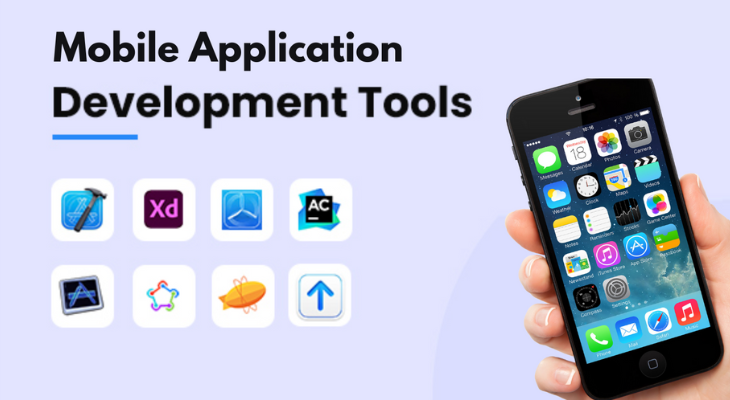
Programming Languages and Frameworks
Programming languages and frameworks are the building blocks of mobile app development, providing the foundation for writing and organizing the app’s code.
- Native Development Languages: Native development languages are specific to a particular mobile operating system, such as Java for Android and Swift for iOS. They offer high performance, direct access to device features, and optimal integration with the platform.
- Cross-Platform Development Frameworks: Cross-platform development frameworks allow developers to create apps for multiple platforms with a single codebase. This reduces development time and costs, but may involve some trade-offs in performance or native features. Popular cross-platform frameworks include Flutter, React Native, and Xamarin.
Development Environments
Integrated development environments (IDEs) provide a comprehensive platform for writing, editing, testing, and debugging code. They offer features like code completion, syntax highlighting, debugging tools, and project management capabilities.
- Android Studio: Android Studio is the official IDE for Android app development, providing a comprehensive set of tools for building Android apps.
- Xcode: Xcode is the official IDE for iOS app development, providing a powerful environment for creating iOS apps.
In addition to IDEs, cloud-based development platforms like Google Cloud Platform and Amazon Web Services offer scalable and flexible environments for mobile app development.
Testing Tools
Testing is crucial to ensure the quality, functionality, and performance of mobile apps. Various tools are available for testing different aspects of an app.
- Unit Testing: Unit testing focuses on individual components or modules of the app, ensuring that each unit works as expected. Popular unit testing frameworks include JUnit and Mockito for Android and XCTest for iOS.
- Integration Testing: Integration testing verifies that different components of the app interact correctly and function as a cohesive system. Popular integration testing frameworks include Espresso for Android and XCUI for iOS.
- System Testing: System testing evaluates the overall functionality and performance of the app in a real-world environment. Tools like JMeter and LoadRunner can be used for system testing.
Deployment Tools
Deployment tools are used to publish the app to app stores like the App Store and Google Play, ensuring that it is accessible to users.
- App Store Connect: App Store Connect is the platform for submitting and managing iOS apps on the App Store.
- Google Play Console: Google Play Console is the platform for submitting and managing Android apps on Google Play.
Steps mobile application development
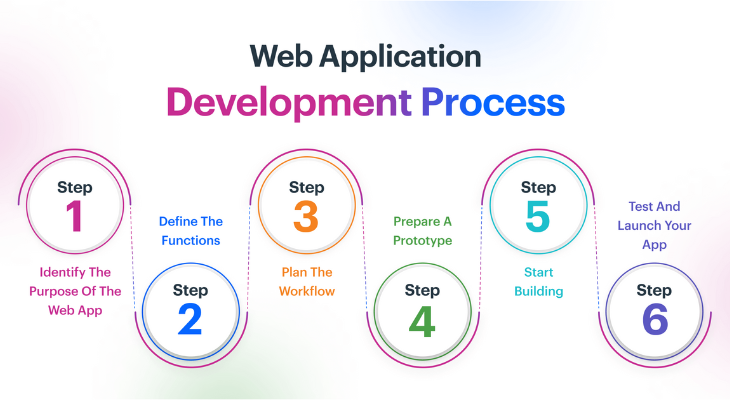
Here is a step-by-step guide to mobile application development:
Planning and Design
- Ideation and Concept Development: Clearly define the purpose, target audience, and core functionality of the mobile app.
- Requirement Gathering: Identify the specific needs and requirements of the app, considering user needs, business objectives, and technology feasibility.
- User Interface (UI) and User Experience (UX) Design: Create wireframes and prototypes to visualize the app’s layout, navigation, and user experience.
Development
- Choose the Development Platform: Select the appropriate mobile operating system (iOS, Android, or cross-platform) and development tools (IDEs, frameworks).
- Set Up the Development Environment: Install the necessary software, libraries, and SDKs (Software Development Kits) for the chosen platform.
- Write and Test Code: Implement the app’s functionality using the chosen programming language and development framework. Conduct unit testing to ensure individual components work correctly.
- Integration Testing: Test the app’s overall functionality and integration between different components.
- User Acceptance Testing (UAT): Gather feedback from a select group of users to refine the app’s usability and user experience.
Deployment and Maintenance
- App Store Submission: Prepare the app for submission to the relevant app store (App Store or Google Play), ensuring compliance with guidelines and policies.
- App Store Optimization (ASO): Optimize the app listing with relevant keywords, descriptions, and screenshots to improve its visibility in search results.
- Monitoring and Maintenance: Continuously monitor app performance, user feedback, and analytics to identify and address any issues or bugs.
- Updates and Enhancements: Provide regular updates to fix bugs, introduce new features, and improve app compatibility with new operating system releases.
Conclusion
Mobile application development has become a crucial aspect of the digital landscape, transforming how businesses interact with customers and individuals access information and services. With the ever-growing prevalence of smartphones and tablets, mobile apps have become an indispensable part of our daily lives.
As technology continues to evolve, mobile application development is poised to play an even more significant role in shaping our future. Emerging technologies like artificial intelligence, augmented reality, and virtual reality are opening up new possibilities for innovative and immersive mobile app experiences.
FAQs
What are the most popular mobile app development platforms?
The most popular mobile app development platforms include Android Studio for Android apps, Xcode for iOS apps, and cross-platform frameworks like Flutter and React Native.
How do I get my mobile app published on the App Store or Google Play?
To publish your app on the App Store, you’ll need to create an Apple Developer account and submit your app through App Store Connect. For Google Play, you’ll need a Google Play Developer account and submit your app through the Google Play Console.
How do I market my mobile app?
There are various ways to market your mobile app, including App Store Optimization (ASO), social media marketing, search engine optimization (SEO), paid advertising, and influencer marketing.




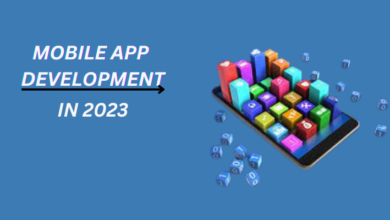
One Comment